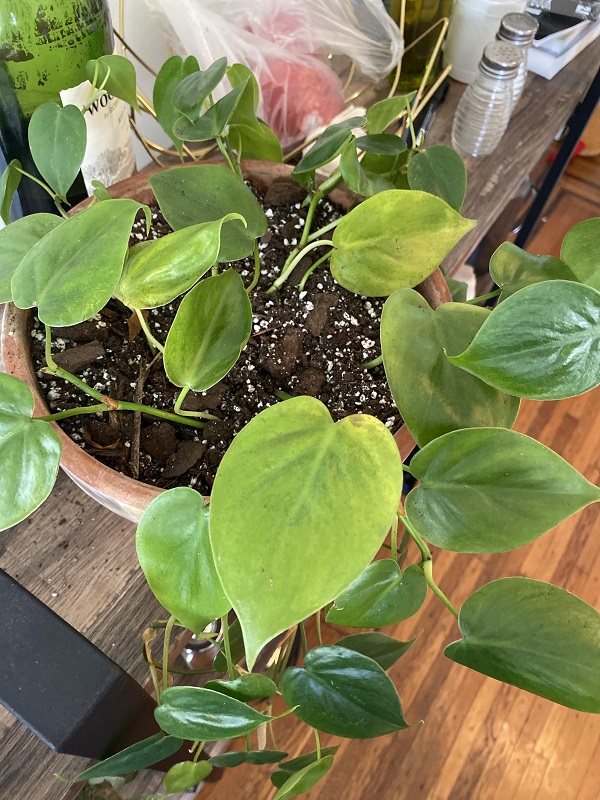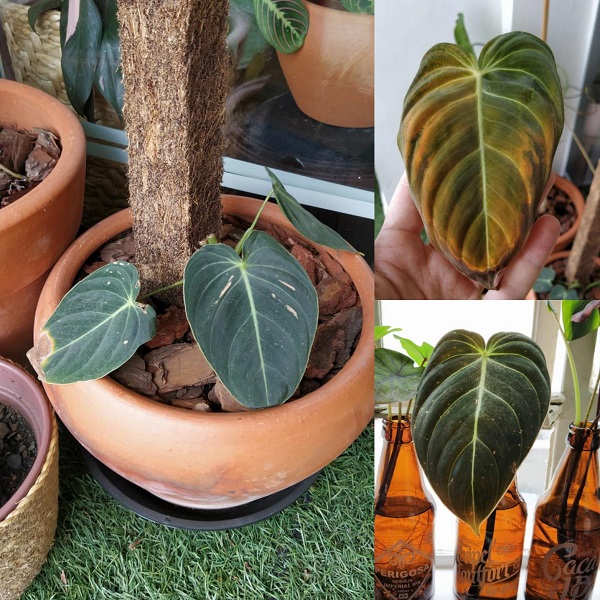Philodendrons are one of the most rewarding houseplants there are. They have basic care and maintenance, which is actually pretty easy once you master it. Their amazing foliages, in varying colors and patterns, are more than enough as a prize for the right amount of love and care.
However, your Philodendron plants are no exception to common troubles and mishaps that a plant lover will encounter. One common problem is having yellow leaves.
If you ever found yourself looking at your Philodendrons having yellow leaves and don’t know what is causing it, you have come to the right place.
In this article, we will discuss all the probable causes of why your plant is having this problem, and of course, their specific fixes to help you and your plant get through it.
Getting to Know Philodendrons
Philodendrons hail from tropical rainforests where they climb up trees. They are a large group of plants, comprising of approximately 489 species.
They belong to the Arum family, Araceae, and are a close relative to other famous Arums such as Alocasias, Anthuriums, and Monsteras.
Taxonomically, the Philodendron genus is still poorly studied, and many are still undescribed up to date. Many Philodendrons are cultivated as indoor and ornamental plants.
Did you know?
The genus name “Philodendron” comes from the Greek words “Philo” and “Dendron”, meaning “love” and “tree”, respectively. Hence, Philodendron is loosely translated as “tree lovers” or “tree huggers”, due to their growth habit as climbing vines.
Why Does My Philodendron Have Yellow Leaves?

Philodendrons are native to tropical rainforests, mainly in the South, North, Central America, and the West Indies. They are very much adapted to the environmental conditions in dense forests with dapple bright light and humid, moist conditions but with proper drainage.
Yellowing Philodendrons are caused by not meeting the basic environmental conditions for your plants.
It can be due to watering problems, temperature stress, unfavorable light conditions, improper humidity level, and pests and diseases, among others.
The problem of yellow leaves can be easily solved once the root cause is identified. Thus, it is important to thoroughly check your plant before taking action.
We will discuss below all the probable causes as to why your Philodendron plants are having yellow leaves, along with their specific fixes.
1. Watering Problem
Issues in watering are most common to gardeners, especially those who have just started their plant journey.
Each plant has different water requirements and thus should be watered according to its needs. This is where the mistake usually comes from.
Philodendrons love a moist environment, but not to the point that they are soaked for a long period of time. They also could not tolerate being allowed to stand dry.
Overwatering
This is the common cause of plant problems that almost all new plant lovers face.
It is very easy to overwater plants, especially if you do not consider the limit of their needs. Overwatering is a primary cause of yellowing leaves of Philodendrons.
When your plant is soaked in excess water, the roots are waterlogged and are unable to take up minerals and nutrients. Without these essentials, your plant cannot function well. Moreover, pathogens, fungi, and bacteria that cause plant diseases thrive best in moist environment.
This problem, however, is easy to fix. You just lessen your watering, and your plant will regain its healthy stature in no time. Rectify your watering routine to avoid encountering this problem.
Overwatering Fix
You should not have a fixed watering schedule. Watering should depend on whether or not the plant needs water.
To do this, check the top 2 to 3 inches of the soil first by sticking your fingers or using a stick.
If the soil is moist, do not water your plant yet since water is still available. If it is already dry, it is your cue to give water to your plant.
However, if the soil is heavily compacted and does not drain fast, you should consider repotting your plant.
Use a well-draining, light, airy soil to give your plant roots enough oxygen and proper drainage. Also, use a pot that has enough number of drainage holes.
Underwatering
Underwatering may be an uncommon reason for yellowing leaves of Philodendrons; however, it is still possible.
Aside from yellow foliage, underwatered plants have different symptoms, such as curly and crispy leaves, and brown leaf tips.
Underwatering Fix
To fix this problem, just give your plant a thorough watering.
Soak the plant first to a few inches of water for about 5 to 10 minutes since dry soil has the tendency to repel water. Your plant should go back to being healthy once water is readily available.
2. Potting Problems

Repotting plants is an easy task, but if not done right, it can lead to detrimental problems to your plants.
There are two factors that should always be considered when doing this usual garden chore: potting mix and the pot size to be used.
Potting Mix
The potting mix is very crucial for a healthy plant. Without a well-draining, nutrient-rich soil, your plant will suffer from overwatering and will die from nutrient deficiency. A heavily compacted soil mix that does not drain water well is also a probable cause of yellowing leaves.
Use a potting mix that is well-draining and light. To achieve this, try mixing your garden soil with organic materials such as peat moss, perlite, and coco coirs.
You can also use a commercially available Arum mix because this is already suited to meet your Philodendron soil needs.
You might like: Lush Tropicals: What Is The Best Soil For Philodendron?
Pot Size
This is also a common mistake of new gardeners. An extremely large pot does not always mean a happy plant.
A large pot has more soil quantity, and thus soaks up more water than what your plant needs. It also doesn’t drain water quickly, thus you end up having a waterlogged plant again.
To use the correct pot size when repotting, choose a pot that has a diameter of 2 inches larger than the previous pot size.
This way you will avoid overwatering your plant and have yellow leaf problems.
3. Seasonal Changes
As season changes, environmental conditions also change. This affects how your plant soaks up water and nutrients, and essentially, how they grow.
If you fail to consider this and you stick to your usual routine, your plant will surely have yellowing leaves.
During the winter months, your Philodendron will have a lesser growth rate and activity, thus, it requires less frequent watering than when it is summer or spring, when they are actively growing and needs a lot of water.
To be certain of when to water your plant, always stick your finger or a stick first to the soil and check the soil moisture.
4. Light Requirements
Unfavorable light conditions also cause yellow leaves to your Philodendron.
Remember that Philodendrons thrive best in bright, indirect light. If this requirement is not met, your plant will not function efficiently.
Direct Sunlight
If your plant gets direct sunlight for a long period of time, its leaves can be scorched due to UV rays. A scorched leaf can have brown or yellow leaf spots, and brown and curled edges.
Place your plants in a different spot where they cannot get long periods of direct light. If your plant is grown indoors, a sheer curtain can help filter bright light.
Low Light

On the other hand, if your plant is in an environment where light is always insufficient for a long period of time, the leaves will become pale and yellow.
You can see more yellow leaves in the lower part of your plant because of extreme less light exposure.
5. Pests
Pests are also a common problem in gardens, especially when grown indoors.
Philodendrons are pest magnets, especially to aphids, mealy bugs, scales, and spider mites. These insects suck on plant juices from stems and leaves.
If no action is not taken immediately, the damage to the plant will become worse and harder to fix. Over time, intense yellow spotting and mottled yellowing on leaves, holes, or leaf droppings can be observed.
To fix this, isolate your infested plant and discard all affected plant parts. Spray insecticides, pesticides, or horticultural oils, such as neem oils, to your plant to eliminate this problem. Consider applying at least once to twice a month to avoid this problem in the future.
6. Nutrient Deficiency
Nutrients are essential for your plant to grow healthy. Although a good soil already has nutrients within, it diminishes over time with watering, thus, you need to augment it by putting fertilizers on a regular basis. A nutrient-deficit plant can lead to yellow foliage.
Apply a well-balanced fertilizer to your plant for at least once a month during their growing seasons, summer and spring.
During winter season, you can lessen the feeding to every six to eight weeks to avoid chemical burns.
7. Temperature
The optimum range of Philodendrons is between 60°F to 80°F. They can be fussy when the temperatures fall below 50°F, manifesting problematic symptoms such as yellowing of leaves.
During the winter season, place your Philodendron indoors to keep it warm. Avoid placing them near appliances to avoid heat drafts, which will also cause problems to your plants.
8. Plant Age
This is really not a plant problem; rather, this is just a part of the normal plant cycle. Yellowing of leaves can be a sign of both old and new leaves.
New leaves emerge as pale and yellow. They will darken in just a matter of weeks to match the color of mature leaves. On the other hand, old leaves senesce and become yellow due to the loss of chlorophyll.
Remember that appearance of normal yellow leaves depends on the season. The shedding of old leaves is more apparent during autumn and winter, as plant sheds unnecessary foliage. On the other hand, many new leaves sprout during spring and summer.
Final Thoughts
Philodendrons are among the easiest plants to take care of. However, some problems occur inevitably from time to time, thus, you must be readily armed with information on how to solve them.
In order to become a great plant owner, you must study and know your plant well – their needs, what to avoid, and how to fix common problems
Being a plant owner is really a rewarding and enjoyable role, however, it is also coupled with a major responsibility.
But the more you are a responsible caretaker to your plants, the healthier they will be. And the healthier they will be, the more enjoyment you get from your well-loved plants.
If you have anything to share about your Philodendron plants, you are always free to comment down below. Let the world know about your awesome relationship with your plants!
